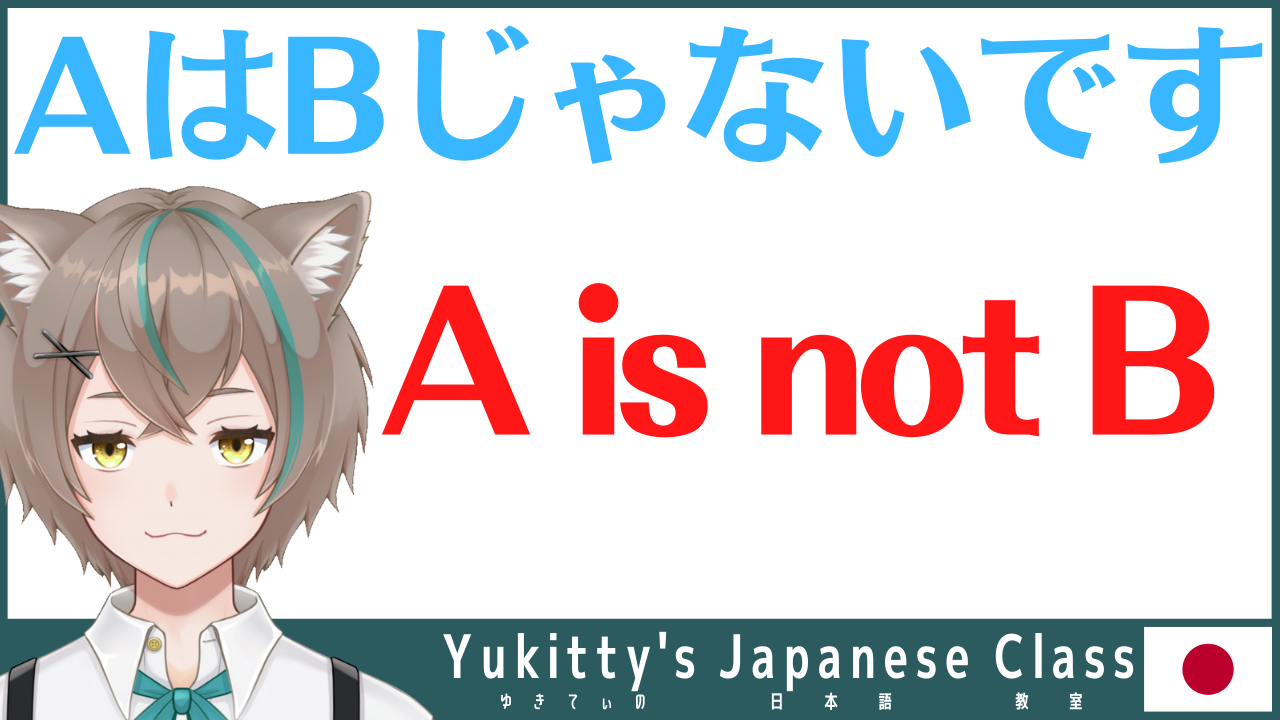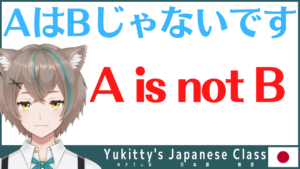


AはBじゃないです

In English, the word for denial is “not”. In Japanese, there are 2 variations “~ないです” and “~ありません”.
And they are changed by the type of predicate.
The negative form of です is じゃないです (or ではないです).
The negative form of であります is じゃありません (or ではありません).
You can use では instead of じゃ. では is a little politer expression than じゃ.
When では is used, it is often followed by the sentence しかし(but).
あれは飲み物です + じゃない = あれは飲み物じゃないです。
That is not a drink.
飲み物 [noun] drink, beverage
Other correct expressions
あれは飲み物ではないです。あれは飲み物じゃありません。あれは飲み物ではありません。
バスは長いです + じゃない = バスは長くないです。
A bus is not long.
バス [noun] bus
長い [I-adjective] long
Wrong expression
バスは長いじゃないです。
In the case of dictionary form, the I-Adjective ends with い, but in the negative form, the I-Adjective ends with く.
And じゃ or では should be removed.
Other correct expressions
バスは長くはないです。バスは長くありません。バスは長くはありません。
りんごは好きです + じゃない = りんごは好きじゃないです。
I do not like apples. (私は is omitted)
りんご [noun] apple
好きな [Na-adjective] like, favorite
Other correct expressions
りんごは好きではないです。りんごは好きじゃありません。りんごは好きではありません。
Na-adjective is called “adjective verb” in Japanese textbooks for Japanese children.
彼は走ります + じゃない = 彼は走らないです。
He does not run.
走る [verb] run
Wrong expression
彼は走るじゃないです。
In the case of dictionary form, the verb ends with the “u” sound, but in the negative form, the verb ends with another sound. In this case, it is “a” sound. This transformation is detailed on the page below.
LINK under construction
Other correct expressions
彼は走りはしないです。彼は走りません。彼は走りはしません。
In the case of verb sentences, ありません cannot be used but しないです or しません should be used.
| Sentence type | ~ないです | ~ありません |
|---|---|---|
| Noun, Na-adjective | じゃないです ではないです | じゃありません ではありません |
| I-adjective | くないです くはないです | くありません くはありません |
| Verb | ないです はしないです | ません はしません |
Translate the following sentences into Japanese using “じゃないです”.
This is not my pen.
ペン [noun] pen
This is not my pen.
これは私のペンじゃないです。
Other correct answers
これは私のペンではないです。
これは私のペンじゃありません。
これは私のペンではありません。
He is not strong.
強い [I-Adjective] strong
He is not strong.
彼は強くないです。
Other correct answers
彼は強くはないです。
彼は強くありません。
彼は強くはありません。
She is not fine.
元気な [Na-Adjective] fine, healthy, vigorous
She is not fine.
彼女は元気じゃないです。
Other correct answers
彼女は元気ではないです。
彼女は元気じゃありません。
彼女は元気ではありません。
I do not sing.
歌う [verb] sing
I do not sing.
私は歌わないです。
Other correct answers
私は歌いはしないです。
私は歌いません。
私は歌いはしません。


この記事が気に入ったら
フォローしてね!
Comment